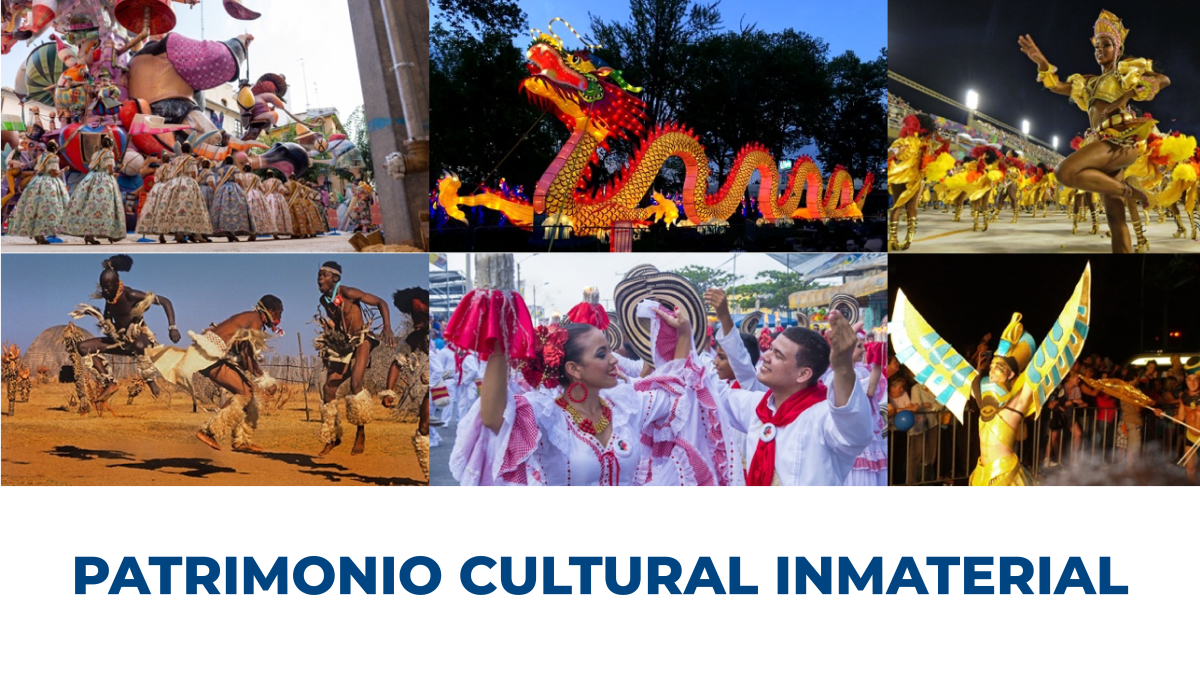
Este mes de octubre es el aniversario de la aprobación de la Convención para la Salvaguardia del Patrimonio Cultural Inmaterial.
Del 29 de septiembre al 17 de octubre de 2003 se llevó a cabo la Conferencia General de la Organización de las Naciones Unidas para la Educación, la Ciencia y la Cultura (UNESCO) como 32ª reunión en París.
Esta conferencia se encuentra enmarcada en las herramientas internacionales existentes en referencia a los derechos humanos, en particular, a la Declaración Universal de Derechos Humanos de 1948, al Pacto internacional de Derechos Económicos, Sociales y Culturales de 1966 y al Pacto Internacional de Derechos Civiles y Políticos, también de 1966.
Hasta entonces, el patrimonio cultural inmaterial había sido mencionado en la Recomendación de la UNESCO sobre la salvaguardia de la cultura tradicional y popular de 1989 y en la Declaración Universal de la UNESCO sobre la Diversidad Cultural de 2001, así como en la Declaración de Estambul de 2002.
En el año 2003, se otorga al concepto de patrimonio cultural inmaterial la independencia necesaria para elevarla en el marco semántico, sin olvidar la estrecha conexión con el patrimonio material cultural y natural.
De esta manera, se definió “patrimonio cultural inmaterial” como los usos, representaciones, expresiones, conocimientos y técnicas -junto con los instrumentos, objetos, artefactos y espacios culturales que les son inherentes – que las comunidades, los grupos y en algunos casos los individuos reconozcan como parte integrante de su patrimonio cultural. Este patrimonio se transmite de generación en generación y es recreado constantemente por las comunidades y grupos en función de su entorno, interacción con la naturaleza y su historia, infundiéndoles un sentimiento de identidad y continuidad y contribuyendo así, a promover el respeto de la diversidad cultural y la creatividad humana.
En la Convención, también se delimitaron los ámbitos del patrimonio cultural inmaterial a:
- Tradiciones y expresiones orales, incluido el idioma como vehículo del patrimonio cultural inmaterial.
- Artes del espectáculo.
- Usos sociales, rituales y actos festivos.
- Conocimientos y usos relacionados con la naturaleza y el universo.
- Técnicas artesanales tradicionales.
Este patrimonio presenta una riqueza incomparable, a la vez que frágil por su carácter cambiante y la necesidad de la práctica social. Es por ello, que las generaciones presentes y futuras debemos cuidar y proteger este patrimonio, pero, sobre todo, observarlo, entenderlo, vivirlo con todos los sentidos posibles y compartirlo.
Consulta el documento completo aquí.
__
CONVENTION FOR THE SAFEGUARDING OF THE INTANGIBLE CULTURAL HERITAGE
This October is the anniversary of the adoption of the Convention for the Safeguarding of the Intangible Cultural Heritage.
From September 29th to October 17th, 2003, the General Conference of the United Nations Educational, Scientific and Cultural Organization (UNESCO) held its 32nd session in Paris.
This conference was framed within the framework of existing international human rights instruments, in particular the Universal Declaration of Human Rights of 1948, the International Covenant on Economic, Social and Cultural Rights of 1966 and the International Covenant on Civil and Political Rights, also of 1966.
Until then, intangible cultural heritage had been mentioned in the 1989 UNESCO Recommendation on the Safeguarding of Traditional Culture and Folklore and the 2001 UNESCO Universal Declaration on Cultural Diversity, as well as in the 2002 Istanbul Declaration.
In 2003, the concept of intangible cultural heritage was given the independence necessary to elevate it in the semantic framework, without forgetting the close connection with tangible cultural and natural heritage.
Thus, "intangible cultural heritage" was defined as the uses, representations, expressions, knowledge and techniques - together with the instruments, objects, artifacts and cultural spaces inherent to them - that communities, groups and, in some cases, individuals recognize as an integral part of their cultural heritage. This heritage is transmitted from generation to generation and is constantly recreated by communities and groups according to their environment, interaction with nature and their history, giving them a sense of identity and continuity and thus helping to promote respect for cultural diversity and human creativity.
The Convention also delimited the domains of intangible cultural heritage to:
a) Oral traditions and expressions, including language as a vehicle of intangible cultural heritage.
b) Performing arts.
c) Social practices, rituals and festive events.
d) Knowledge and practices related to nature and the universe.
e) Traditional craft techniques.
This heritage presents an incomparable richness, at the same time fragile due to its changing character and the need for social practice. It is for this reason that present and future generations must care for and protect such heritage, but, above all, observe it, understand it, live it with all possible senses and share it.
See the complete document here.
__
